If you want gorgeous natural light photos, you have to understand the best time to take outdoor photos.
Why?
Because the quality of light is key in photography–and the quality of the light changes, depending on the time of the day.

![Best Time to Take Outdoor Photos [INFOGRAPHICS] Best Time to Take Outdoor Photos [INFOGRAPHICS]](https://phototraces.b-cdn.net/wp-content/uploads/2020/07/fi_Best_Time_to_Take_Pictures_Outside.jpg)
In this article, I’m going to share with you exactly what you need to know, so that you can consistently pinpoint the times of day when you want to be shooting.
When Is the Best Time to Take Outdoor Photos?
The best time to take outdoor photos is during “magic hours.” The magic hours start one hour before sunset or sunrise and last for approximately 2 hours. During these times, the sunlight travels for a much longer distance to reach the surface of the Earth, and the atmosphere diffuses the light making it soft, warm, and dramatic.
Let’s break it down:
Broadly speaking, the best time to take outdoor photos is when the light is soft.
By this, I’m referring to the times when the sun is low in the sky or beneath the horizon, and therefore creates a softer type of light, or when the sunlight is diffused through thick cloud cover (i.e., on overcast days).
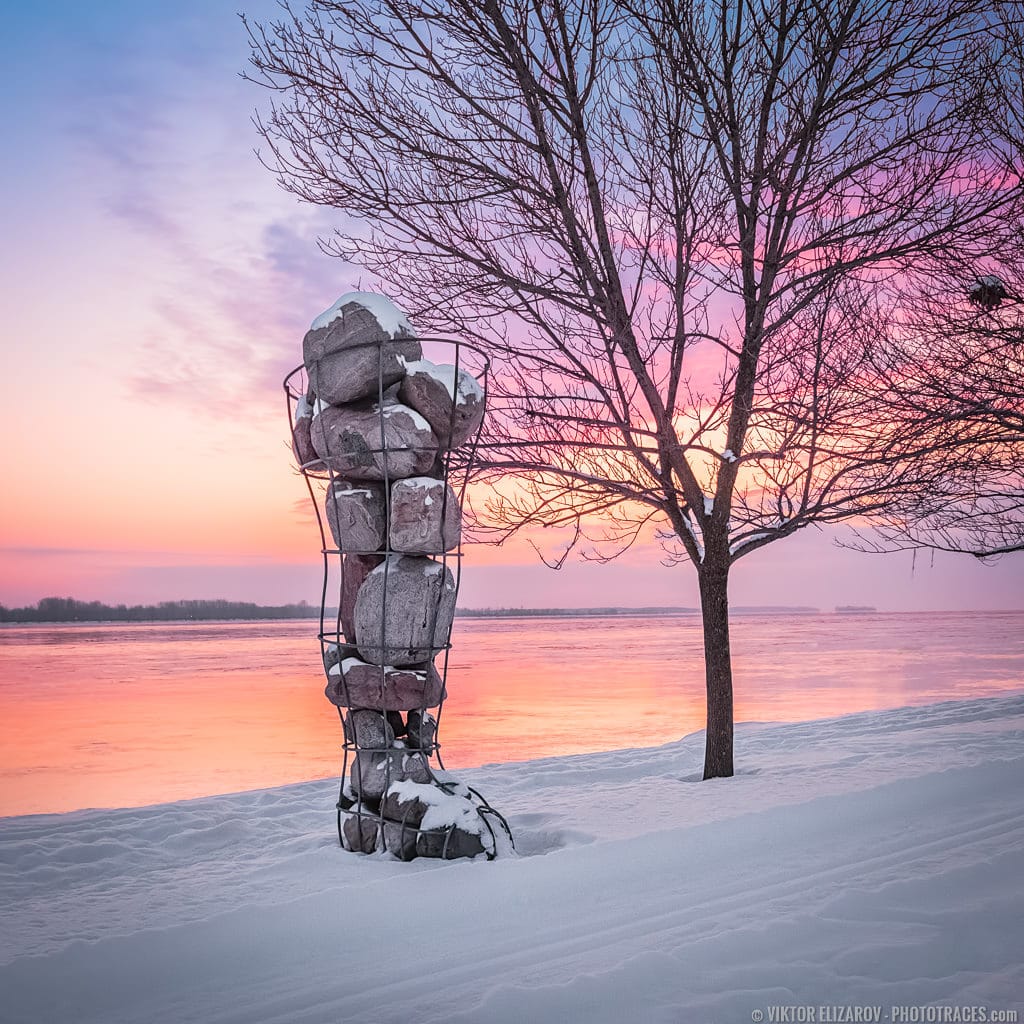

This soft light is great for photography and will create nice colors and tones without causing harsh shadows.
Note that you also get soft light just after the sun has set or just before the sun has risen, during the twilight (AKA “Blue Hour”).
In the next section, I’ll dive into these different times of day in greater depth:
Anatomy of Light Infographic
These are a few of the key types of natural lighting that you should be aware of when approaching your photography:
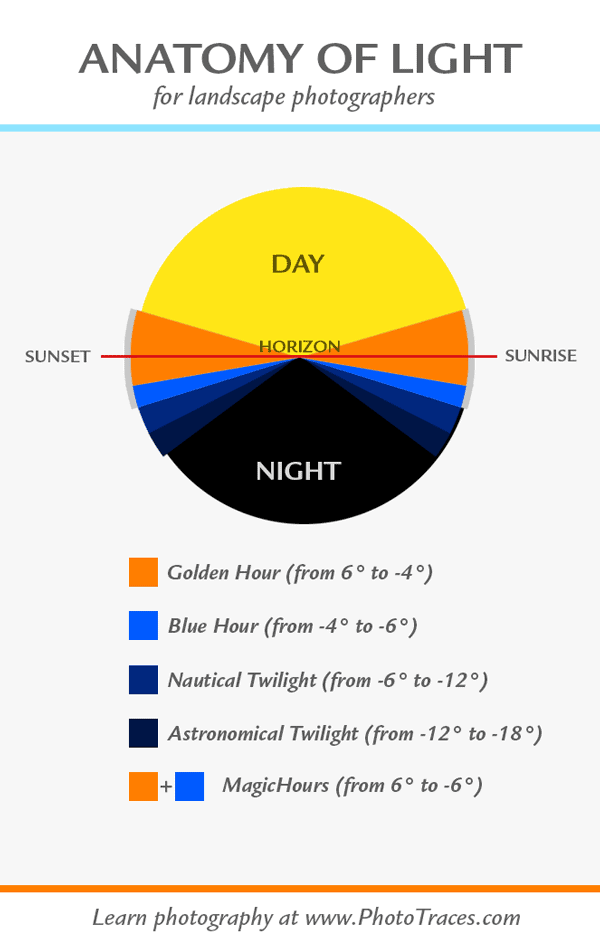

1. Golden Hour
Golden hour is a favorite of photographers, because the sun is low in the sky (and therefore offers soft, golden light), but the sun’s brightness isn’t low enough to significantly limit your shutter speed.
Technically speaking, the Golden Hour starts and ends when the center of the sun is 6 degrees above the horizon and ends when it is -4 degrees below the horizon.
In many locations during most of the year, this roughly corresponds to the hour or so after the sun rises, and the hour or so before the sun sets, hence the “Golden Hour” label.
But depending on the location, you may get far longer golden hours (which simply means that you get a lot of great light to work with!).


2. Blue Hour
Blue Hour begins just after Golden Hour finishes (or just before Golden Hour starts, when discussing sunrise), and lasts while the sun is anywhere between -4 degrees and -6 degrees below the horizon.
During this time, you’ll get very soft, blue light. But the light strength will be limited since the sun sits beneath the horizon line.


3. Nautical Twilight
Technically speaking, Nautical Twilight is when the sun is at -6 degrees to -12 degrees past the horizon line.
At this point, the light will have faded substantially.
4. Astronomical Twilight
Astronomical Twilight refers to the time when the sun is between -12 and -18 degrees. Note that Astronomical Twilight offers very little light to work with.
And once Astronomical Twilight is over, the sky is completely dark.
The Magic Hours in Photography
As I mentioned, photographers love the Golden Hour, thanks to its soft, golden light.
Many photographers are also fans of the Blue Hour, due to the even softer, more ethereal lighting effect that it produces.
Together, the Golden Hour and the Blue Hour are known as the “Magic Hours,” thanks to the gorgeous lighting they offer.
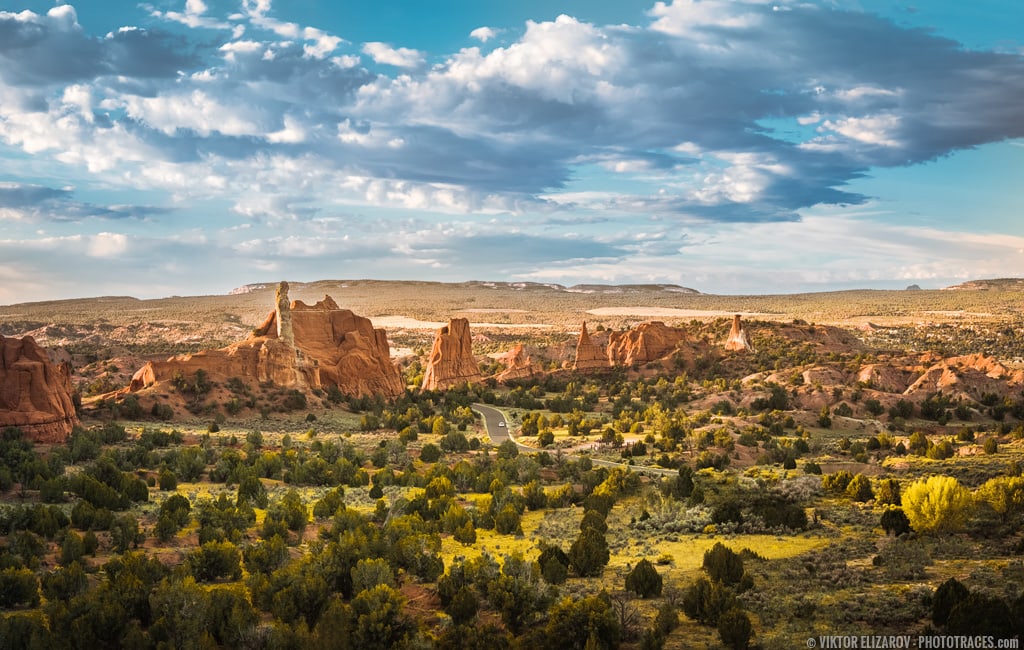

And these are the most favorable times for landscape photography.
Note that Nautical Twilight and Astronomical Twilight are too dark for most purposes, and are essentially true “night” photography.
Understanding Golden Hour Light
As you now know, Golden Hour light is a great time to do outdoor photography.
This is because it creates light that’s both very soft and very warm.
But why is this the case? What’s so special about the Golden Hour?
It has to do with two features of the atmosphere:
Its diffusion capabilities, and its filtering capabilities.
The Atmosphere as a Giant Diffuser
The atmosphere acts as a diffuser–so that the farther light travels through Earth’s atmosphere, the stronger the diffusion effect.
When the sun is high in the sky, around midday, light travels between 10-11 miles through the atmosphere (so the diffusion effect is relatively minor).
Compare this to a low sun, around sunrise or sunset; here, the light must travel over 200 miles to reach the Earth’s surface upon entering the atmosphere.
In other words:
Light travels much farther when the sun is low, which results in a strong diffusion effect. And this, in turn, produces softer light.
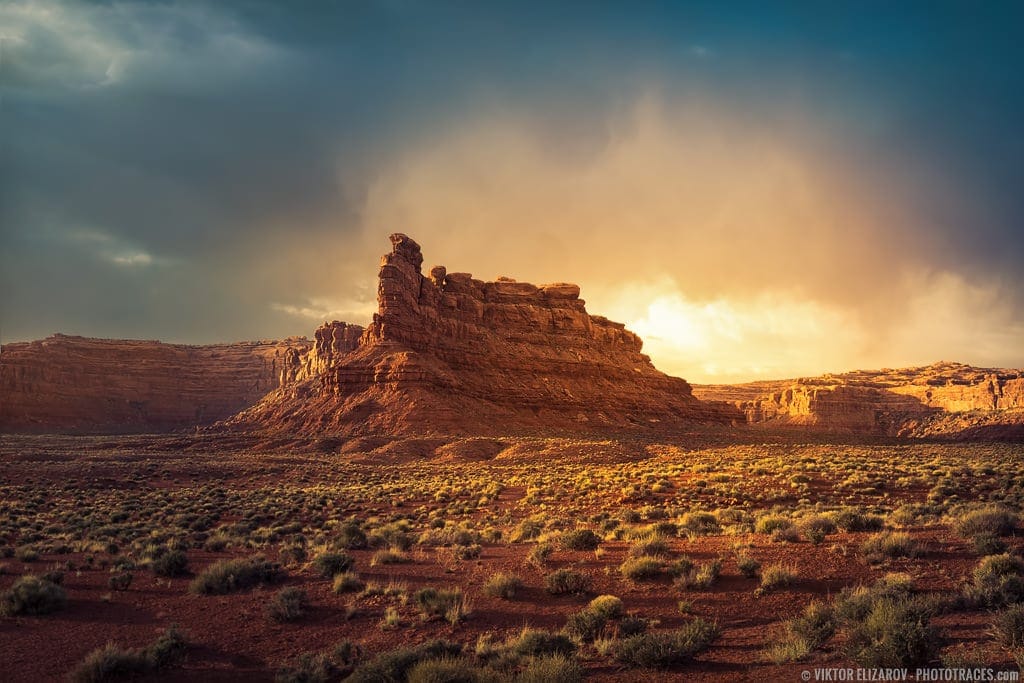

The Atmosphere as a Giant Filter
When light travels through the atmosphere, it’s scattered by different particles of air.
Blue spectrum is the most strongly affected.
So when the light travels for long periods through the atmosphere, blue light rarely makes it as far as the surface, forcing red to predominate.
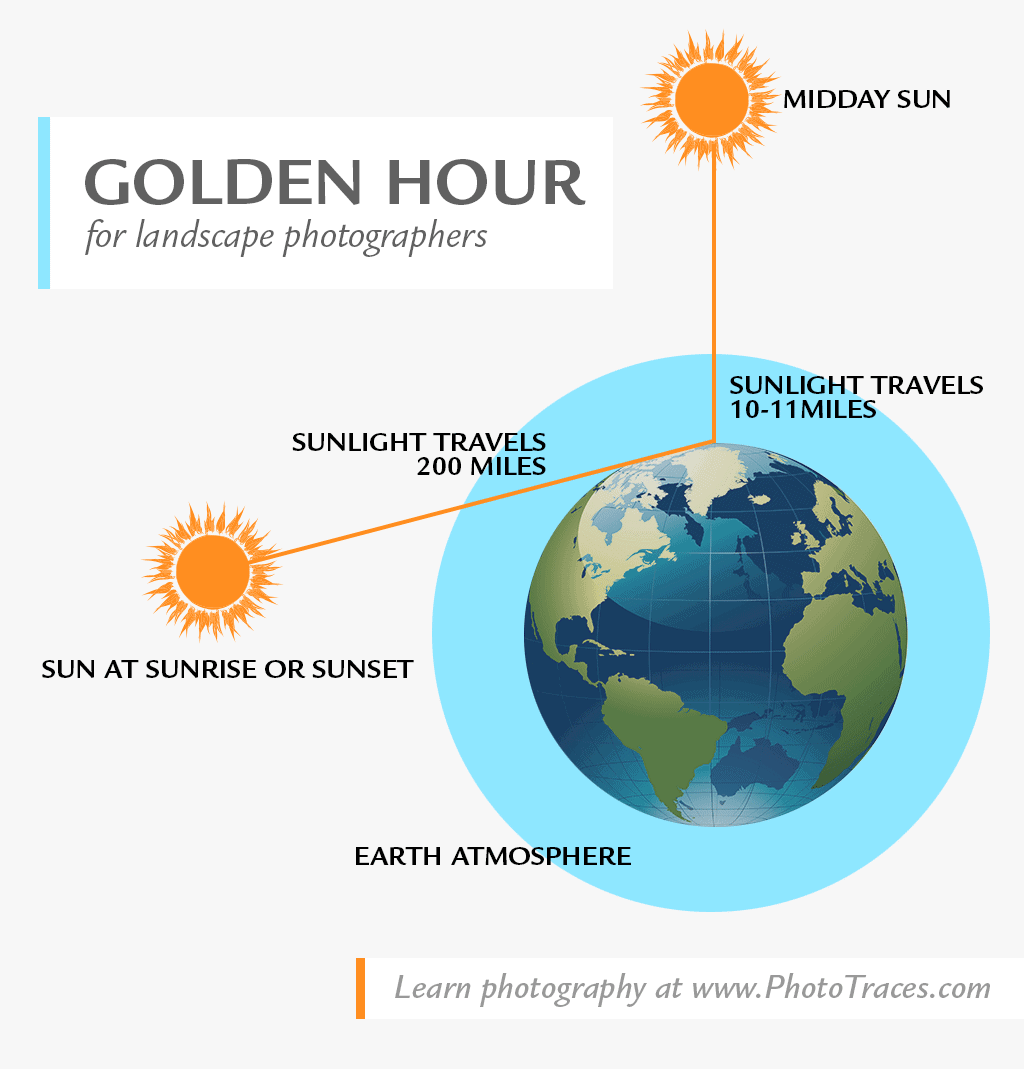

Hence, the light is much warmer during the Golden Hour time period.
What Is the Best Time for Landscape Photography?
If you’re a landscape photographer, then there are a few times you’ll want to pay attention to.
Golden Hour
As with most forms of photography, Golden Hour is great for landscape photos; it allows for beautiful, golden light and interesting (but soft!) shadows.
This is when many landscape photographers begin shooting (and some will spend time scouting during the harsh midday light).
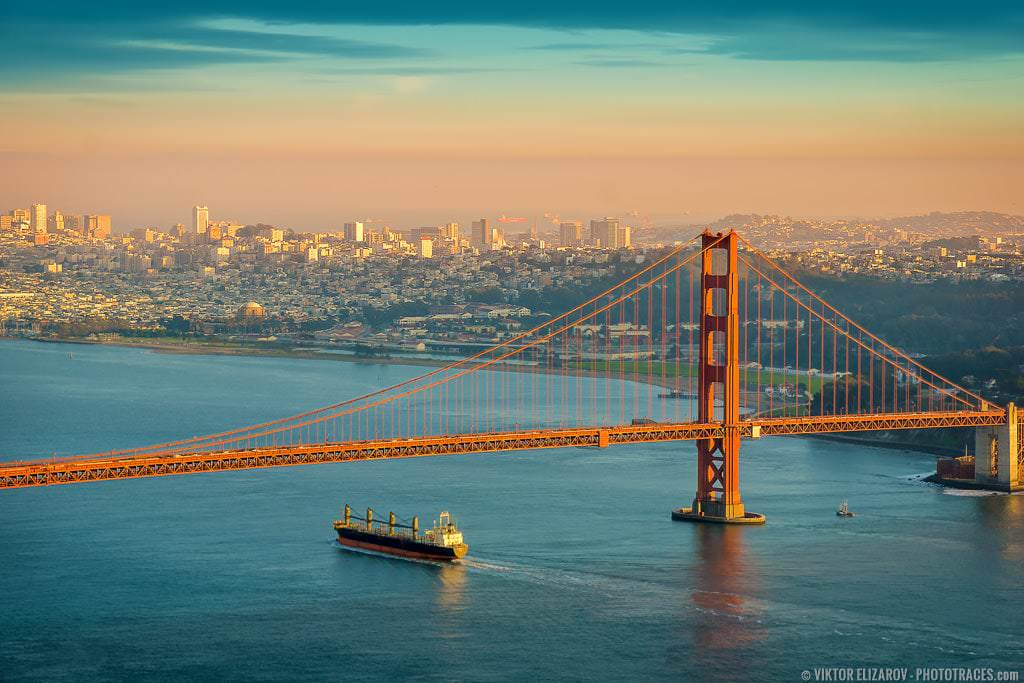

Blue Hour
Blue Hour is another great time for landscape photography. The light is very weak, but wonderfully soft.
If you plan to shoot during Blue Hour, you’ll definitely need a sturdy tripod, because Blue Hour is the time at which you’ll often need to shoot at shutter speeds of 1 second or longer.
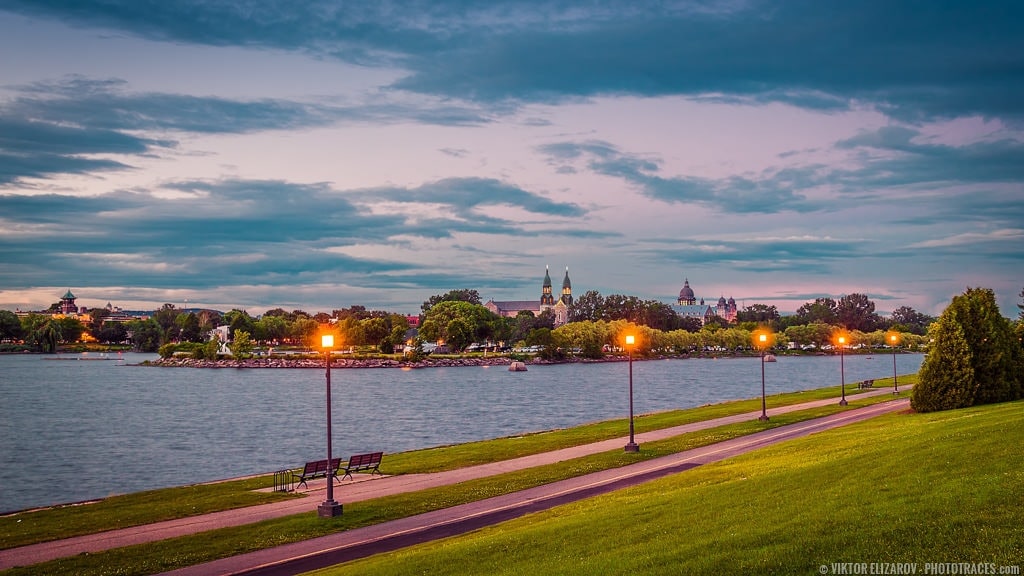

Bad Weather
While bad weather may seem frustrating, it’s actually great for landscape photography. Bad weather brings stormy skies, which makes for lots of drama.
Make sure you pack up before the storm hits, however, or you’ll end up with some very wet gear!
My Favorite Time for Landscape Photography
Personally, I like to shoot during Golden Hour when the weather is stormy. It offers good, strong light, so you can capture a mix of handheld intimate landscapes and tripod-based, deep depth-of-field photos.
Plus, during Golden Hour, just before or after a storm, you can get some really interesting skies!
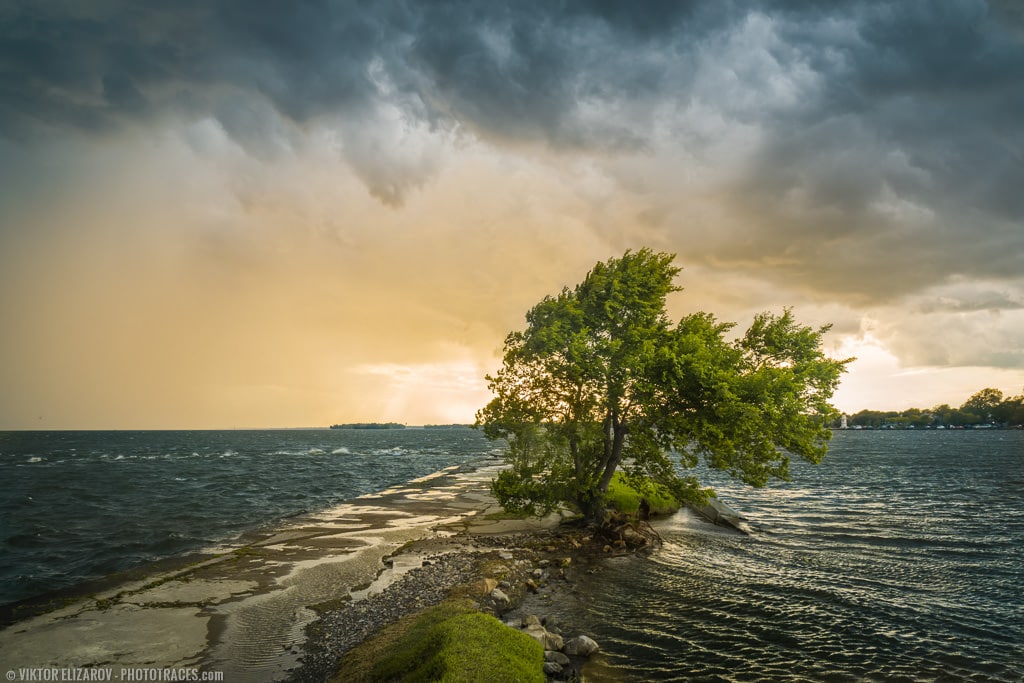

What Is the Best Time to Take Outdoor Portraits?
If you’re going to be shooting portraits, you’ll want to try to take photos during two key times:
Just before Golden Hour, and when the sky is cloudy.
Let’s take a look at each of these options in turn:
60-90 Minutes Prior to Golden Hour
Golden Hour is not ideal for outdoor portraits, for a few reasons.
First, the light is changing constantly during Golden Hour, which means that you have to change your settings frequently. This can be frustrating for both you and your portrait subject.
Second, Golden Hour doesn’t last very long, so there’s often not enough time for a full-blown portrait session. This alone means that you’d need to extend your photoshoot to before or after Golden Hour.
And third, the warm colors of the sunset often change people’s skin tones, resulting in an unnatural appearance. Because capturing correct skin tones is paramount in portrait photography, this makes working during Golden Hour more of a struggle.


So, instead of shooting during Golden Hour, I recommend shooting portraits in the 60-90 minutes prior. The light is changing less quickly, you get a lot of decent light, and you don’t have to worry about unnatural skin tones.
Overcast Weather
You can also shoot portraits when the sky is cloudy–because the overcast sky works as a giant natural diffuser.
This creates the kind of soft light you want in portrait photography, which eliminates harsh shadows under your subject’s eyes and chin.
Another benefit of overcast weather is that you can shoot all day; you don’t have to worry about avoiding harsh, midday light.
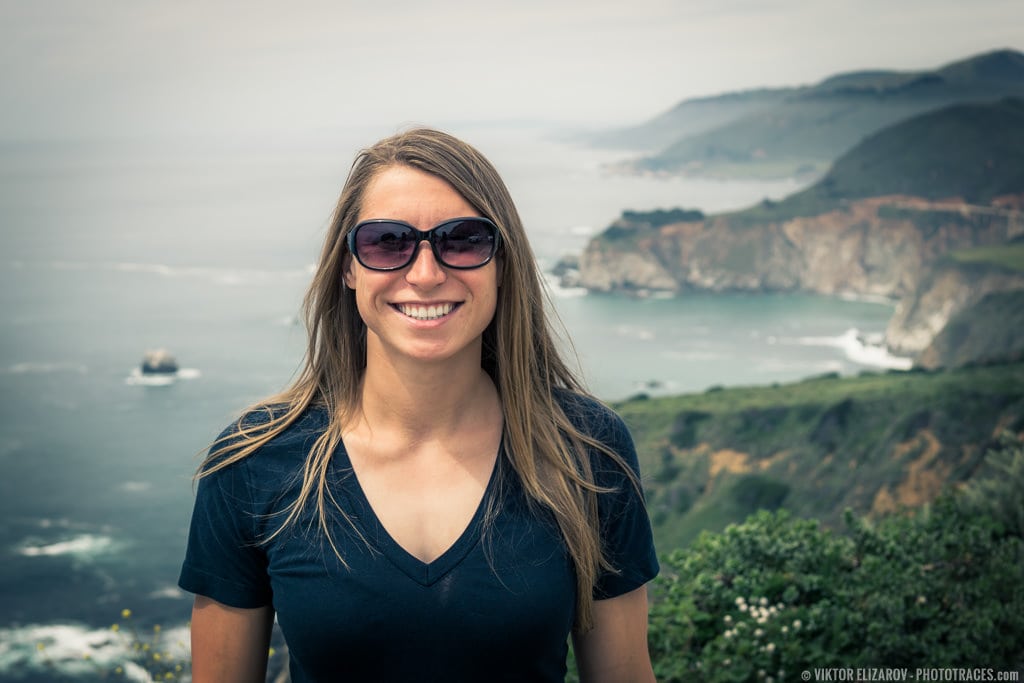

Speaking of which:
Midday
I don’t recommend shooting portraits during midday.
This is when the light is colorless, is very direct, and is extremely harsh. So you’ll end up with strong, unflattering shadows all over your subject.
If you do need to shoot during the day, make sure you place your model in the shade. This will reduce harsh shadows on their face, and will also prevent your models from squinting.
My Favorite Time for Outdoor Portraits
The light just before Golden Hour is great for portrait photography, especially when it’s overcast. You’ll get a very flattering effect!
When Is Golden Hour Today?
While Golden Hour changes depending on your location and the season, there are some excellent mobile apps that calculate Golden Hour, Blue Hour, Nautical Twilight, and Astronomical Twilight for literally any time of the year.
PhotoPills is a great option–and it’s very comprehensive, too, allowing you to also calculate sun and moon positions, hyperfocal distances, and much more.
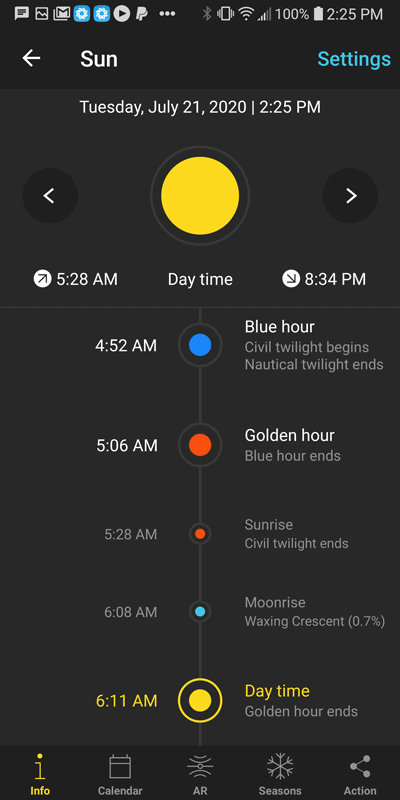

A good free Android alternative is Exsate Golden Hour. And if you’re looking for an iPhone option, I recommend The Photographer’s Ephemeris, which comes at a very reasonable price.
How Long After Sunset Does It Get Dark
“How Long After Sunset Does It Get Dark?” is a loaded question. Depending on latitude and time of year, the answer will vary.
As a rule of thumb, I give myself around 1 hour after the sun entirely submerged behind the horizon. For 60 min, I sill can use my standard landscape photography equipment and settings. And after an hour or so, it is getting too dark if I want to continue shooting I need to switch to astrophotography lens and use a different setting and techniques.
Best Time to Take Outdoor Photos: Conclusion
If you want to capture gorgeous photos, you must understand the best time to take outdoor photos.
That way, you can always shoot with the softest, most flattering light.
And your photos will look stunning.

![Best Time to Take Outdoor Photos [INFOGRAPHICS] Best Time to Take Outdoor Photos [INFOGRAPHICS]](https://i2.wp.com/phototraces.b-cdn.net/wp-content/uploads/2020/07/fi_Best_Time_to_Take_Pictures_Outside.jpg?w=696&resize=696,0&ssl=1)